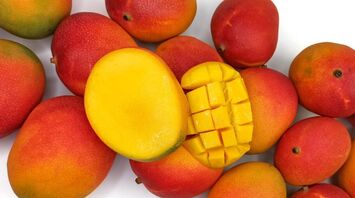How to Pick a Ripe Mango

Choosing a ripe mango at the supermarket can be tricky. Ripe mangoes have a soft, juicy texture that captures the essence of tropical climates and sweet flavors. In contrast, unripe mangoes are hard and lack the appealing, rich quality of their ripe counterparts.
When searching for the perfect mango, it's important to keep in mind that different varieties exhibit various signs of ripeness. These mangoes come in a range of shapes, colors, and flavors.
Physical Indicators of Ripeness
The best way to determine if a mango is ripe is by touch. Gently squeeze the mango in your hand. A ripe mango will yield slightly under pressure. Conversely, if it feels hard, it isn’t ripe yet.
Interestingly, color is not always a reliable cue for ripeness. Many mango varieties do not reveal their state visually, leading to potential confusion. Some mangoes may exhibit vibrant red and yellow skin but still be unripe. Meanwhile, certain types do change color as they mature, often turning a golden shade.
Ripening Unripe Mangoes
If you cannot locate a ripe mango, consider purchasing an unripe one. You can let it ripen at room temperature for a few days in your home. To speed up the ripening, place it in a brown paper bag.
For some dishes, a fully ripe mango isn’t necessary. If you plan to cook, bake, or pickle the mango, using one that is not entirely ripe can be appropriate. However, for fresh eating, the riper the mango, the better the taste.
Earlier, SSP told how to easily remove peanut skin.



















